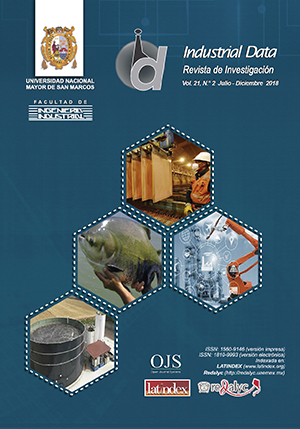The impact of 5S on Microbiological Air Quality of an agrobiological products quality laboratory
DOI:
https://doi.org/10.15381/idata.v21i2.15599Keywords:
5S, microbiological air quality, CFU, laboratoryAbstract
Microbiological air quality (MAQ) was monitored in the agrobiological products quality laboratory before and after the application of the "5S" methodology. The results were obtained through the agar-plate sedimentation method, carried out via biweekly sampling from April to June and from September to November of 2017, keeping temperature and relative humidity parameters constant (23 + 2 ° C and 62 + 3%). The initial level of 5S achieved only 43% of compliance, considered as "Below average", obtaining in this instance MAQ sampling distributed among fungi of 25 CFU/plate (50%), followed by bacteria at 16 CFU/plate (33%) and yeast at 8 CFU/plate (17%). In contrast, after carrying out 5S implementation, a result of 91% or "Excellent" level was obtained, which had fungal counts of 14 CFU/plate and 1 CFU/plate for the case of bacteria and yeasts. That is to say, the total microbial load decreased 68% between both conditions. By means of Student’s T test for means of related samples, significant differences in Microbiological Air Quality before and after 5S implementation at the laboratory studied were confirmed.Downloads
Downloads
Published
Issue
Section
License
Copyright (c) 2018 Lucía Huánuco, Pedro Pablo Rosales López

This work is licensed under a Creative Commons Attribution-NonCommercial-ShareAlike 4.0 International License.
AUTHORS RETAIN THEIR RIGHTS:
a. Authors retain their trade mark rights and patent, and also on any process or procedure described in the article.
b. Authors retain their right to share, copy, distribute, perform and publicly communicate their article (eg, to place their article in an institutional repository or publish it in a book), with an acknowledgment of its initial publication in the INDUSTRIAL DATA.
c. Authors retain theirs right to make a subsequent publication of their work, to use the article or any part thereof (eg a compilation of his papers, lecture notes, thesis, or a book), always indicating the source of publication (the originator of the work, journal, volume, number and date).






